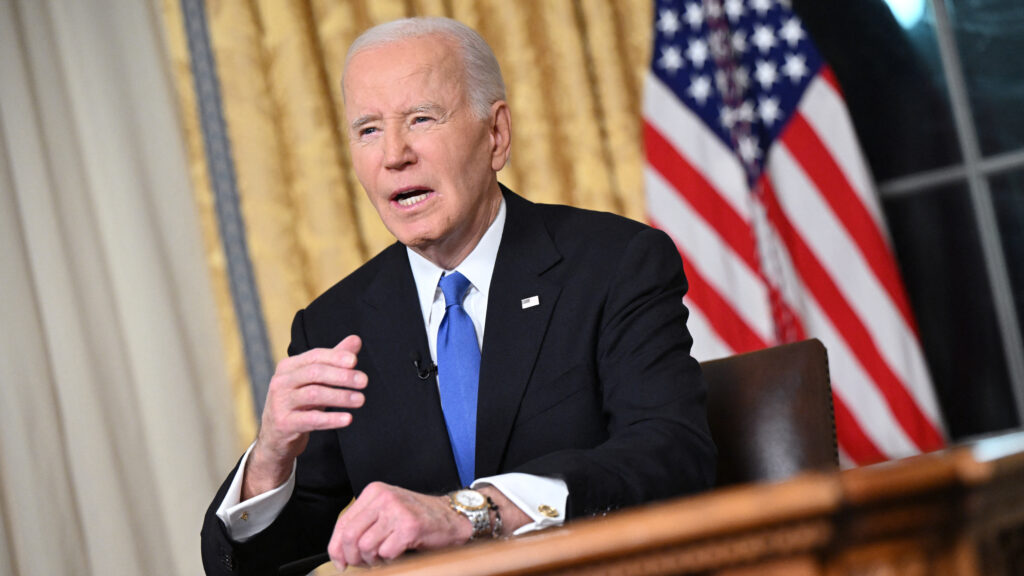The Biden administration is ending its term with a series of actions intended to expand access to addiction treatment — and maintain the legacy of historic support for new ways to reduce drug-related harm.
Over the past month, regulators have taken steps to ensure or expand access to evidence-based interventions for substance use disorders. While none of the new policies individually represent a paradigm shift in addiction medicine, collectively the three actions underscore the government’s emphasis on treatment.
The Biden administration, more than any previous administration, has expressed support for harm reduction: the philosophy of taking steps to reduce injuries and illnesses related to drug use without requiring immediate abstinence from substance users. Over the past four years, the federal government has supported syringe exchanges, the use of fentanyl test strips and other harm reduction techniques. It has also expanded access to medications such as methadone and buprenorphine, as well as the overdose-reversal drug naloxone, which the Food and Drug Administration approved for over-the-counter use in 2023.
In recent weeks, three separate federal agencies have acted to strengthen that legacy. In particular, experts say one little-noticed and highly technical announcement on Dec. 26 could be impactful: the FDA’s formal recognition that many patients require larger doses of buprenorphine, a common drug used to treat opioid addiction, than the guidelines mentioned on the website. drug label.
Buprenorphine and methadone, another drug, are key weapons in the fight against opioid overdose. But in the fentanyl era, many doctors and patients have reported that starting treatment with buprenorphine in particular has become more difficult.
Many doctors have compensated for this by simply administering larger doses, which a growing number of studies show is both safe and effective. However, last month the FDA admitted that the labeling that comes with most oral buprenorphine is often viewed as an actual dosage limit.
Many insurers, both public and private, in turn used such dosing guidelines as justification for imposing requirements that forced providers to seek authorization before prescribing large doses, risking a potentially fatal delay in patient access. Some authorities have only recently lifted these restrictions. Perhaps most notably, the District of Columbia’s Medicaid agency has lifted prior authorization requirements for any dose under 32 milligrams. April.
“Current [buprenorphine] labeling has been misinterpreted by some as suggesting a maximum dosage of 16 or 24 milligrams per day, although the labeling does not explicitly state a maximum dosage,” said Marta Sokolowska, deputy director for substance use and behavioral health at the Center for Drug Evaluation the FDA. Research. The agency’s guidelines, she added, seek to clarify “that daily doses higher than 24 mg per day may be appropriate for some patients.”
The FDA wasn’t the only agency to increase the availability of buprenorphine in the past month. In addition, the Drug Enforcement Administration this week announced a long-awaited rule that will allow licensed prescribers to continue dispensing buprenorphine via telemedicine, a continuation of Covid-era policies that have thus far led to improvements in access without any corresponding cause danger.
The policy allows patients to continue receiving buprenorphine for six months, after which they will likely require an in-person examination before continuing on the medication.
“We understand the difficulties some patients have accessing medical providers in person, and we want to ease this burden while providing safeguards to keep patients safe,” Anne Milgram, the DEA administrator, said in a statement.
A separate rule, also issued this week by the DEA, would create a special registration process for providers who want to dispense other controlled substances via telemedicine, but the proposal was released in draft form, meaning the Trump administration is not required to implement it feed.
Finally, on January 8, the Substance Abuse and Mental Health Services Administration announced a significant change in the way it regulates contingency management, a behavioral health intervention that offers financial rewards, such as gift cards, to people who reduce their drug use.
SAMHSA had previously capped funding for contingency management services at $75 per year, a level experts said was far too low to create real behavior change. The new $750 cap could lead to greater use of contingency management, which is seen as a particularly promising treatment for cocaine and methamphetamine addiction, especially since no medications are currently approved to treat addiction to either substance.
Although drug deaths had increased sharply in the years leading up to Biden’s inauguration and skyrocketed in 2020 during the Covid-19 pandemic, the numbers still rose to record highs during his time in office. Only recently, after the overdose death rate hovered above 110,000 per year for about a year, did drug deaths begin to decline.
While some advocates criticized the Biden administration for failing to address the drug crisis with the appropriate urgency, the past four years mark a significant shift in U.S. drug policy.
Under Biden, the federal government has taken steps to increase access to addiction medications like methadone and buprenorphine, most notably through the first overhaul of methadone clinic regulations in more than two decades. It also codified the repeal of the “X-waiver,” a special registration that doctors had to obtain before prescribing buprenorphine.
Federal policy has also shifted away from abstinence-only strategies and toward harm reduction—in short, a recognition that while eliminating substance use may be for the best, simply reducing it can still yield meaningful improvements in health. And while the government never formally sanctioned the practice of controlled consumption, it looked the other way when two locations opened in New York City and a third opened in Rhode Island.
STAT’s coverage of chronic health conditions is supported by a grant from Bloomberg Philanthropies. Us financial supporters are not involved in decisions about our journalism.

